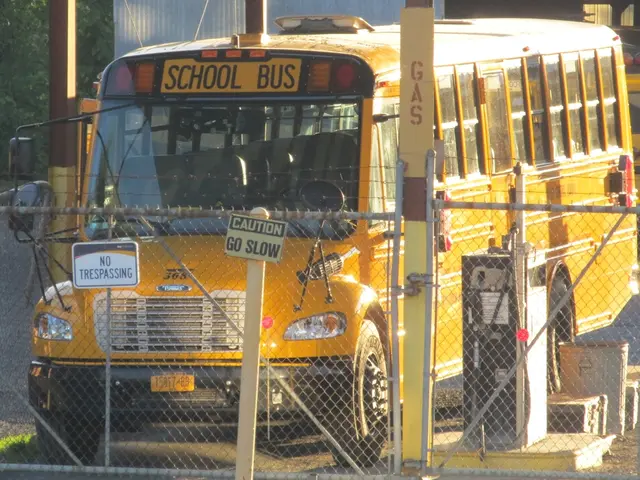Ocean Trash and Microplastic Removal: Paving the Way for Clean Seas
Addressing Plastic Pollution in Marine Ecosystems
The growing menace of plastic waste and microplastics poses a significant threat to marine biodiversity, necessitating a comprehensive approach to address this crisis. This strategy incorporates effective waste management systems, restrictions on single-use plastics, the development of eco-friendly alternatives, and community-driven initiatives.
Policy Measures and Single-Use Plastic Bans
One of the most effective solutions to combat plastic waste involves the implementation of regulations prohibiting single-use plastics. Research indicates that well-crafted bans significantly reduce plastic waste and litter. For instance, plastic bag bans enacted in several U.S. states have eliminated around 297 million single-use plastic bags per year, thereby decreasing their circulation by billions [1][3][5]. These bans have lowered plastic bag litter by over 33%, as shown in their success in mitigating environmental harm [1][7].
However, challenges remain in terms of loopholes in legislation, which may allow businesses to replace thin plastic bags with thicker, reusable alternatives that are often discarded after a single use. To ensure success, it is essential to plug these loopholes and enforce stricter regulations [1][7].
Biodegradable Alternatives: Innovative Solutions
The development of biodegradable materials offers a promising substitute for traditional plastics. Bioplastics like Polyhydroxyalkanoates (PHA) have emerged as a game-changer. These materials are derived from renewable resources, such as plants or food waste, and fully decompose naturally in various environments without specialized treatment [2][4].
Companies are already producing PHA-based products like straws, tableware, and packaging materials. For example, startups like Full Cycle and Genecis create PHA raw materials from agricultural byproducts, while others, such as Refork, blend wood flour with PHA polymers to develop sustainable single-use items [2].
Furthermore, scientists are exploring novel materials like bamboo fiber composites and fungal-based products for their mechanical strength and biodegradability, which could potentially replace conventional plastics in various applications [4][8].
Community Engagement and Clean-Up Efforts
Community participation plays a crucial role in addressing existing plastic pollution. Initiatives such as coastal clean-ups not only remove waste but also encourage public awareness about the severity of marine pollution. These initiatives foster responsibility for the local environment and collective action [6].
Moreover, education campaigns help promote behavioral changes by reducing reliance on disposable plastics and advocating for reusable alternatives like beeswax wraps, bamboo cutlery, and cloth bags [6]. Such grassroots efforts complement government policies and technological advancements in providing a comprehensive solution to plastic pollution.
Tackling Microplastics
Microplastics, tiny particles less than 5 millimeters in size, pose a hidden danger to marine ecosystems. They stem from the degradation of larger plastics or are directly introduced into the environment through products like microbeads in cosmetics. Microplastics infiltrate marine food chains, threatening wildlife and potentially affecting human health.
Mitigating microplastic pollution requires actions aimed at reducing overall plastic production and promoting biodegradable materials that do not break down into harmful fragments. Additionally, research into sophisticated filtration systems for wastewater treatment plants could help capture microplastics before they enter water bodies [5].
A Holistic Approach
The elimination of plastic build-up and microplastics necessitates a multi-faceted approach involving policy enforcement, technological advancements in materials science, community involvement, and education. Implementing bans on single-use plastics, investing in eco-friendly alternatives such as PHA, and organizing clean-up initiatives can significantly decrease the impact of plastic pollution on marine ecosystems [1][2][3][6][8].
These efforts pave the way for a healthier ocean environment and preserve biodiversity for future generations. Moving toward sustainable waste management is a challenging yet essential step in ensuring our planet's longevity and a greener future.
Sources[1] Seeking Solutions for Plastic Pollution: Strategies, Barriers, and Opportunities (Center for International Environmental Law, 2019)[2] PHA Bioplastic: A Natural Solution for Plastic Pollution (Genecis, 2021)[3] Plastic Bag Bans: A Review (National Waste & Recycling Association, 2018)[4] Single-use Plastics: Evaluating Proposed Statewide Ban Legislation (State Science & Technology Institute, 2018)[5] Reducing Microplastics in the Great Lakes (National Wildlife Federation and Northern Environmental Research Council, 2019)[6] The Role of Education and Behavior Change in Plastic Pollution Reduction (Environmental Defense Fund, 2021)[7] Making Single-use Plastic Bans More Effective (National Resource Defense Council, 2019)[8] Biodegradable Plastics: A Sustainable Alternative? (United Nations Industrial Development Organization, 2020)
- To support environmental-science initiatives in sustainable living, researchers and startups are developing biodegradable alternatives like Polyhydroxyalkanoates (PHA) for various products, aiming to reduce the use of traditional plastics in home-and-garden settings.
- Community-driven efforts, such as coastal clean-ups and education campaigns, play a vital role in promoting lifestyle changes that minimize climate-change implications stemming from plastic waste and promote the adoption of reusable alternatives over single-use plastics in everyday use.
- As part of an overall approach to addressing plastic pollution and its impact on marine ecosystems, stricter regulations should focus on plugging loopholes in single-use plastic bans, ensuring their effectiveness and thus, contributing to the development of a greener planet and a healthier environment.






